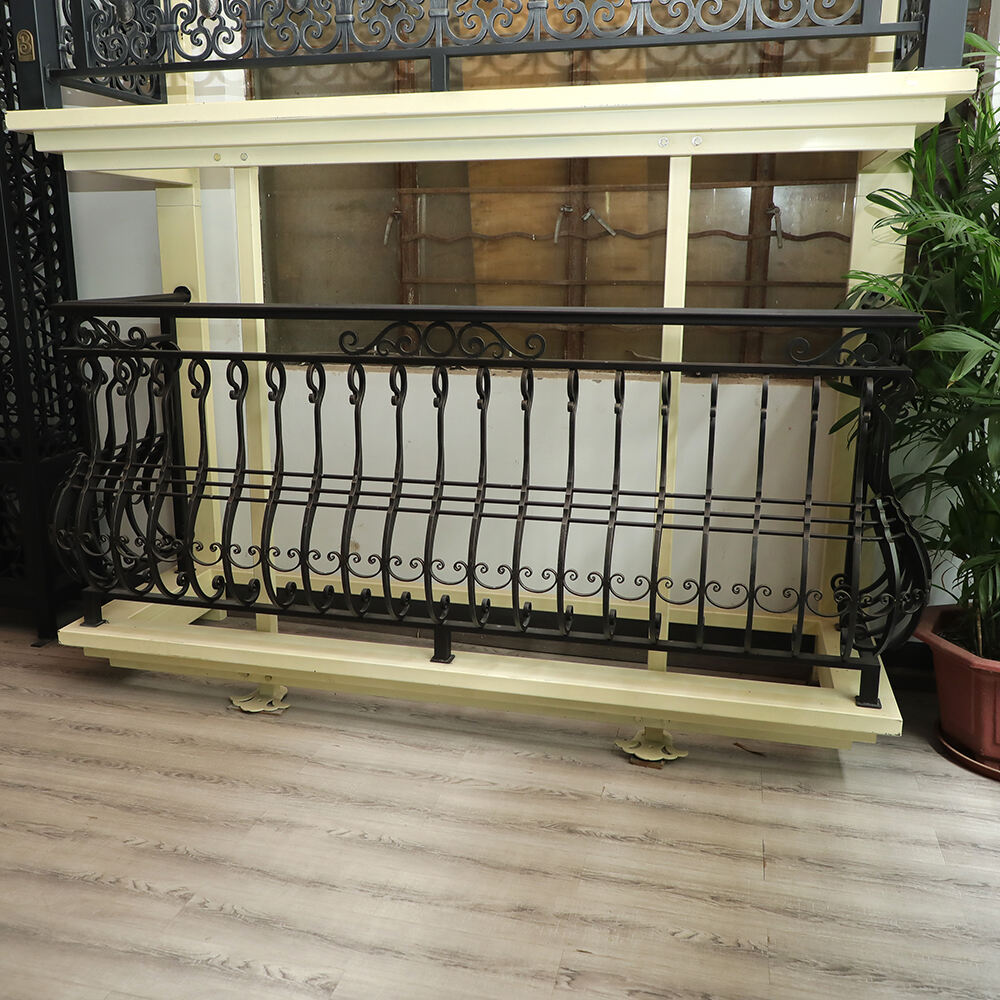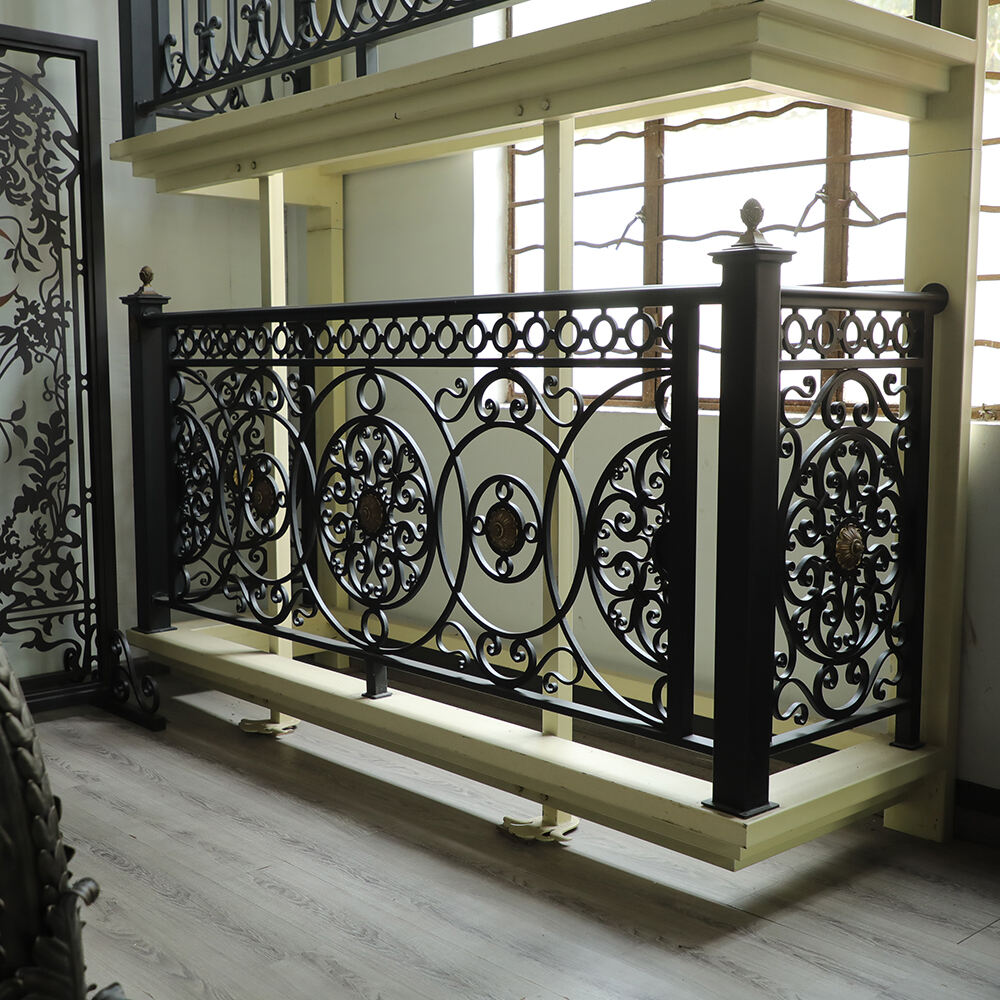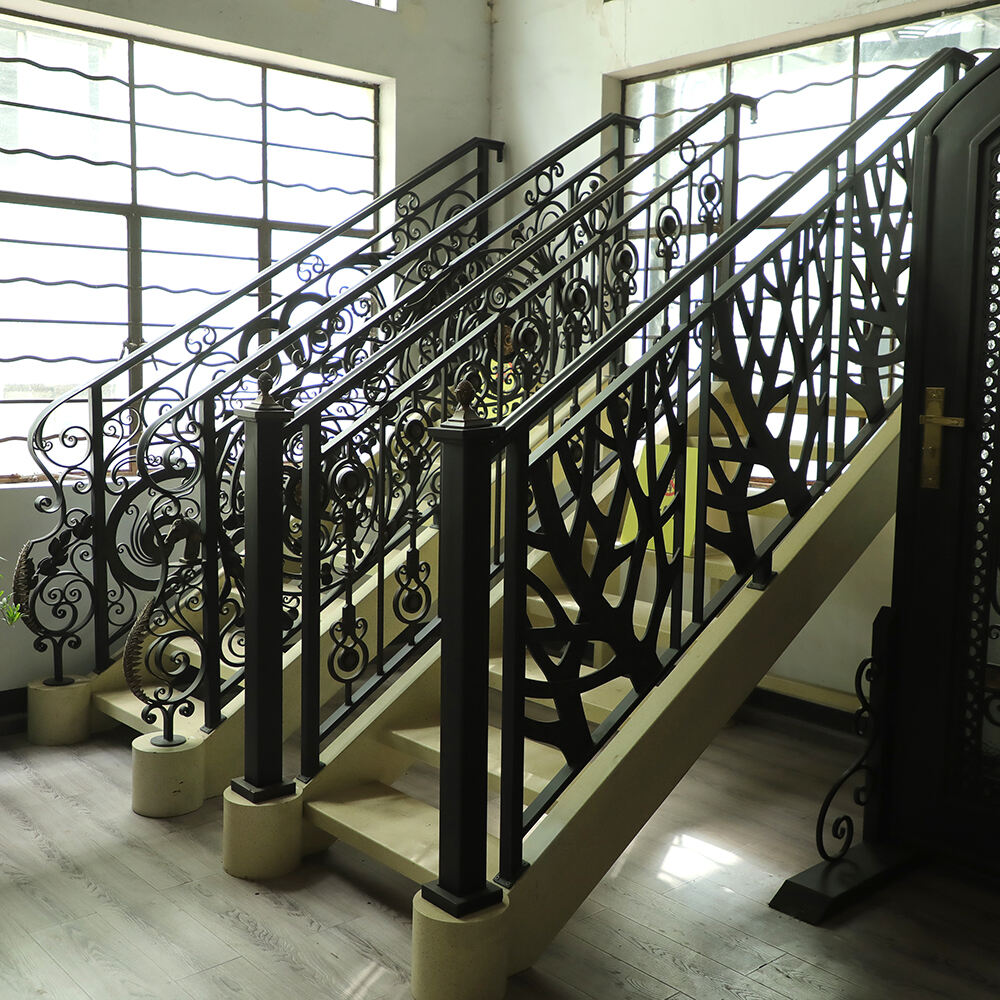Contact Info
Zhejiang Province Hangzhou City Room 12946, Building 9, No. 336 Changjiang Road, Changhe Subdistrict, Binjiang District
The best ergonomic staircase railing designs by Yu Jian (Hangzhou) Trading Co., Ltd. prioritize user comfort, safety, and accessibility without sacrificing aesthetics. Ergonomics is rooted in anthropometric data: handrails are sized (30 50mm diameter) to fit most adult hands, with a slight taper for natural grip, while the height (90 100cm from stair nosing) ensures easy reach for both standing and ascending users. Railing angles follow the stair pitch (30 38°), with continuous runs (no breaks) to support balance during ascent/descent. Materials are chosen for tactile comfort: powder coated wrought iron with a smooth, non slip finish that remains cool in summer and warm in winter, avoiding the extreme temperatures of stainless steel. For accessibility, options include lower secondary rails (60cm height) for children or seated users, and contrast colored rails (e.g., light rails on dark stairs) to aid visually impaired users. Structural ergonomics ensure stability: railings are anchored to wall studs or floor joists, supporting 1.5kN of force (per EN 1991) to prevent swaying. Open designs (baluster spacing ≤10cm) maximize visibility, reducing claustrophobia, while curved transitions at landings eliminate sharp edges. Aesthetic integration is key—ergonomic features blend with design styles: minimalist rails for modern stairs, ornate scrollwork for traditional settings, or mixed materials (iron with wood handrails) for warmth. Testing includes user trials with diverse demographics (ages 5 85) to refine grip comfort and safety. These railings comply with global standards (ADA in the US, BS 5395 in the UK) and enhance staircase functionality, proving that ergonomics and beauty can elevate both residential and commercial spaces.


